Realizing your favorite pair of shoes is damaged can be a real bummer. Do you love to wear leather boots but notice gouges on them and don't know what to do? Well, we've done plenty of research into this topic and have the answers for you. Let's check them out.
In general, fixing gouges on leather boots won't be too difficult. To start:
- Clean the surface of your shoes.
- Apply a color-matched dye to the gouge.
- Fill the gouged area with heavy leather filler.
- Sand down the leather filler.
- Apply another coat of color-matched dye.
- Mix and apply a leather sealer to your boots.
Of course, not every pair of leather boots is the same, so you may need to see a professional shoemaker if the gouges are severe.
As we begin, we will cover all things leather boots and discuss how to repair gouges in them. Whether you're new to caring for leather apparel or need your shoes fixed ASAP, we're here to offer some help. With that said, let's get right into this post!
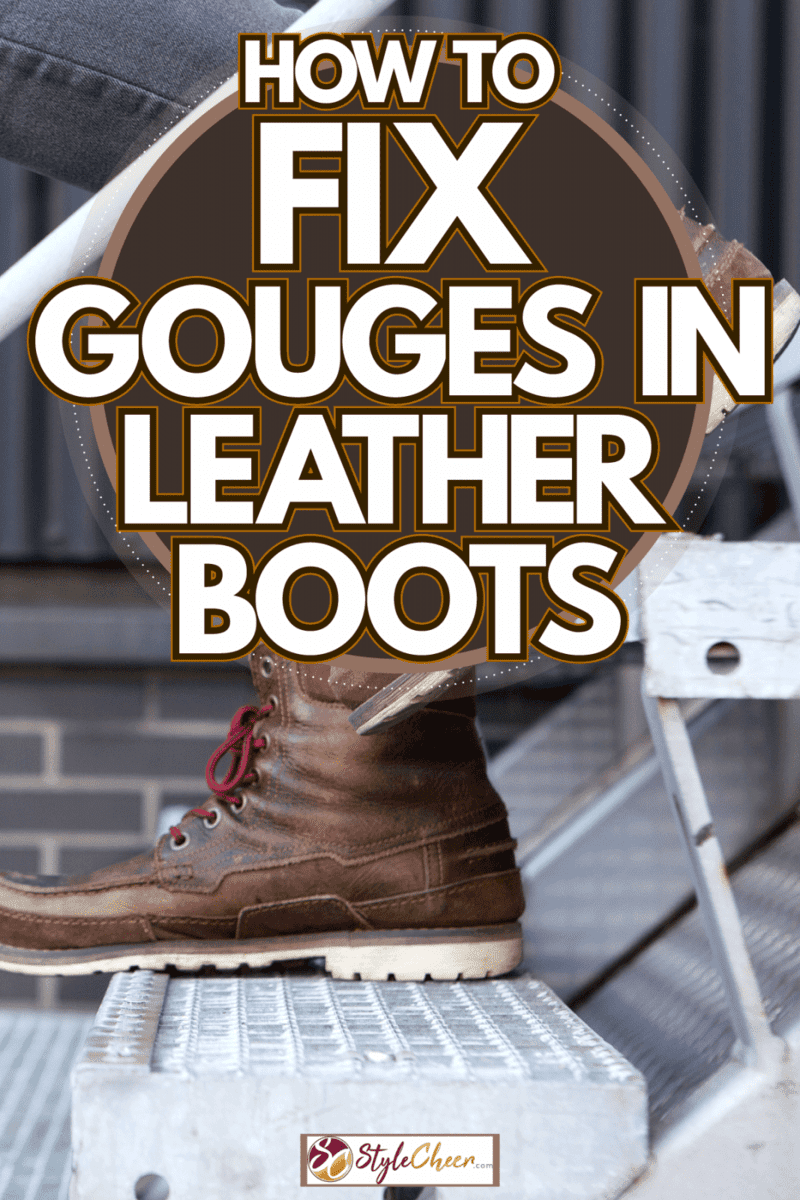
This article may include affiliate links and elements that were carefully created by our team using advanced ai to help you envision the best style advice.
What Causes Gouges In Leather Boots?
Typically, a gouge will form on leather the more you wear your boots. This can happen over time or if you aren't careful with your footwear. However, gouging isn't always preventable, so it's possible to see it happen on your favorite pair of leather boots, even if you take great care of them.

That said, you should be able to repair the indents on your shoes using a bit of leather filler, so this shouldn't be permanent. Again, if all else fails, you can try taking your footwear to a professional to have them looked at, so that may be the best idea for you.
How Do You Get Gouges Out Of Leather Boots?
As we said, it is possible to get the gouges out of your leather boots. To start, you'll need to find a similar colored dye for your shoes. Most of the time, you can find this at a leather store or online if you can tell without physically comparing the two.
Next, you need to purchase leather filler. There are endless options to choose from, so this won't be difficult. We also recommend using a bit of sandpaper to flatten out the surface of your boots once you fill them in, so add that to your list.
Once you have all of your materials, you can follow our above step-by-step tutorial, which should have your boots looking new in no time. Furthermore, you can also take your shoes into a leather repair shop and have the gouges fixed professionally, although this can be expensive.
Repairing Gouges In Leather Tutorial
Here is a helpful video tutorial from Robert Powers' official ">YouTube channel. In this video, he dives into the basics of repairing damaged leather footwear and gives valuable insight for those trying this at home.
What Is Leather Filler?
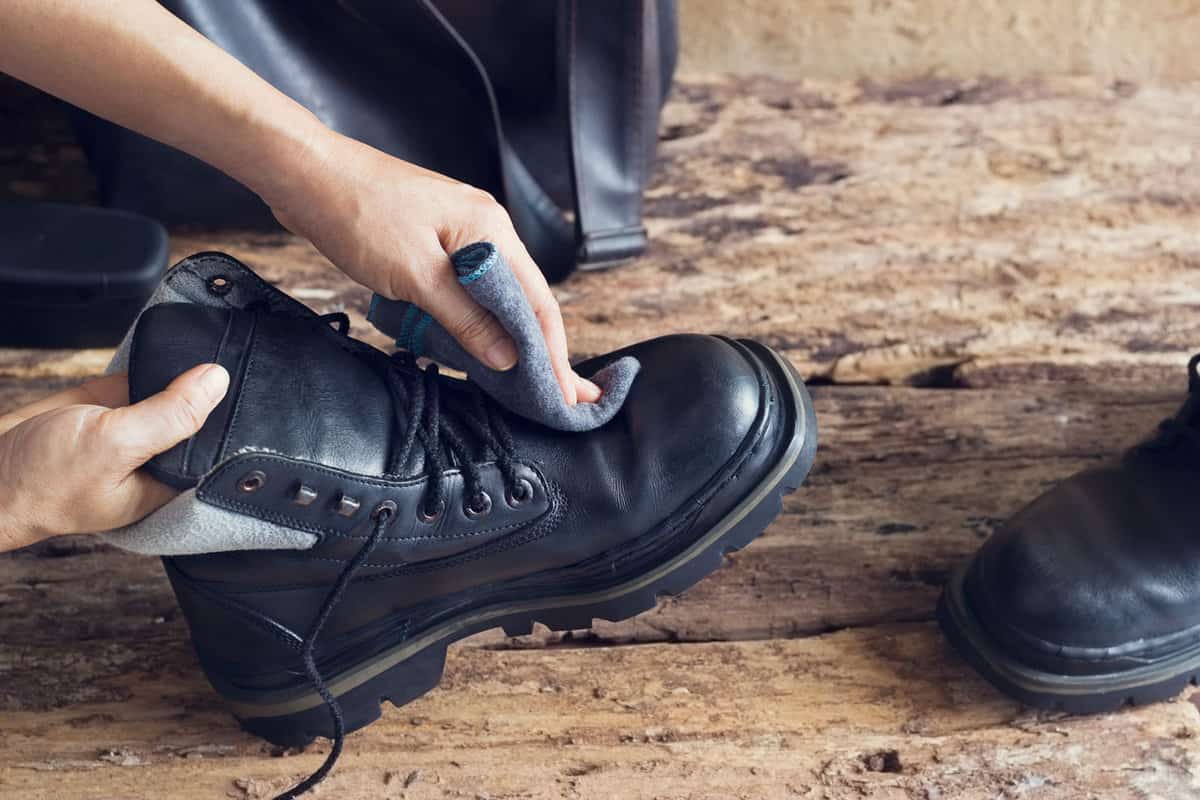
Leather filler is essentially a compound that consists of PVA glue combined with leather paint and finish. You can use it to repair holes, indents, and gouges in your leather shoes and apparel, so it works in many ways.
Additionally, you can usually find leather filler in different shades, so there's bound to be a close match for your shoes. With that said, leather filler won't work for major damage. Many brands will advertise their fillers as minor crack, hole, and gouge compatible, so that's something to consider.
If your shoes are significantly damaged, you most likely won't be able to repair them yourself.
Is Leather Filler Hard To Use?
Generally, leather filler won't be tough to use. Considering that you can usually buy filler along with a leather repair kit, any skill level will be able to use it.
However, the long-term durability of leather filler is sometimes debatable, depending on who you ask. If you love your shoes enough to spend a little extra money having a professional repair them instead of trying a DIY project, this might be a better solution.
Again, this comes down to your budget, skillset, and damage, so everyone is different.
Luxury Leather Repair - Deep Damage Repair Filler
This leather filler promises to work on leather shoes, is durable, has a water-based formula, is easily sandable, and comes in various sizes.
Follow this link to see it on Amazon.
Is Vaseline Good For Leather?
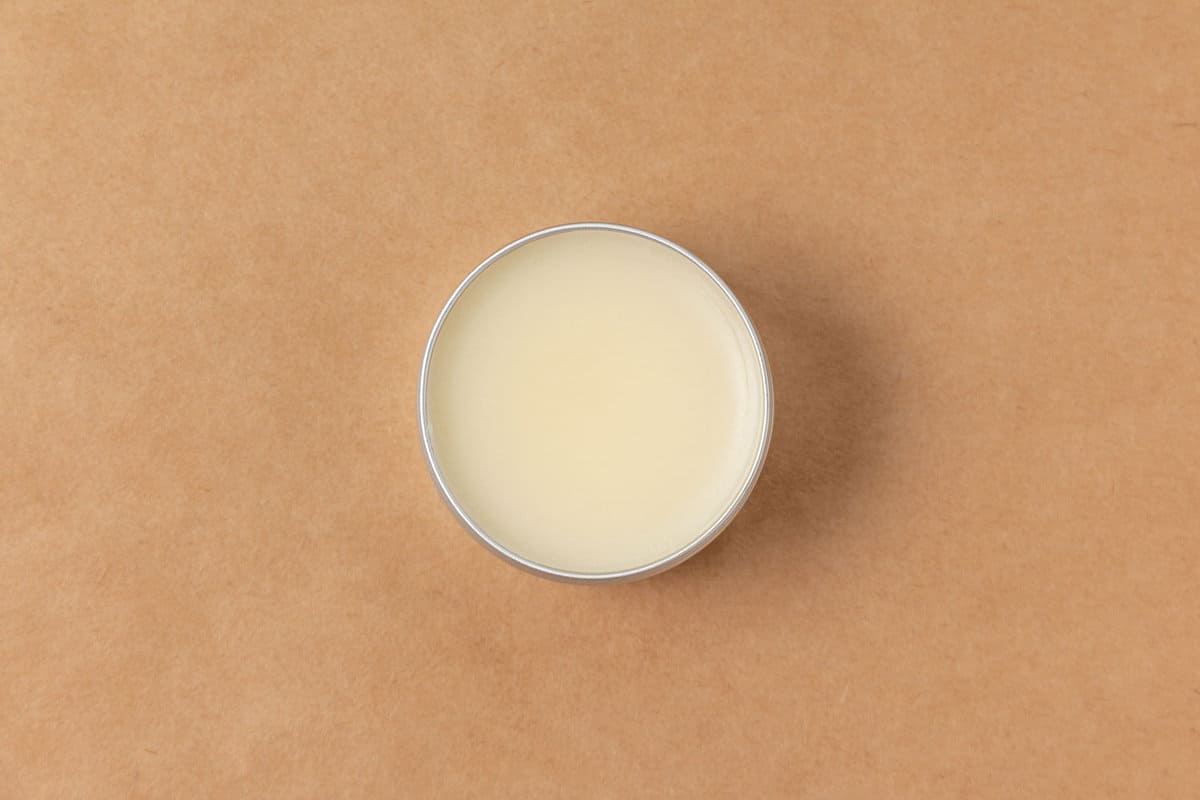
Yes! Using Vaseline to protect your leather boots and apparel from scratching, gouging, and damage is a great idea. That said, Vaseline isn't going to repair gouges or damage that has already been done, so keep that in mind.
On the other hand, Vaseline can be a good waterproofing agent for leather. It can also soften your leather boots and prevent them from cracking as they age.
According to Work Gearz, you can also use a bit of Vaseline to buff out scratches or scuff marks on leather, so it certainly comes in handy.
How Do You Moisturize Leather Boots?
If your boots look extra dry, there are plenty of moisturizing products that you can use on them. We recommend finding a leather formulated shampoo and conditioner, which you can use to clean and hydrate your footwear every few months.
Again, this doesn't need to be anything fancy, but make sure you choose a conditioner from a reputable brand, so you don't end up damaging your shoes. A few good choices include Leather Honey, Kiwi Leather, and Boot Gaurd.
Kiwi Leather Lotion
This moisturizing lotion works on leather shoes and apparel, replenishes the natural oils in your leather, and comes in a five-ounce bottle.
How Often Should You Condition Leather?
Depending on how much you wear your leather, this can affect the amount of moisture it needs. In general, it's best to apply a leather formulated conditioner about once per month to your shoes and apparel.
That said, this timeline can depend on how often you put on your shoes and how well you store them, so you might be able to moisturize less frequently. Regardless, you want to make sure to do this at least every three months to prevent cracking and damage.
Furthermore, some leather conditioners are stronger than others, so make sure to read the instructions beforehand.
Can You Condition Leather Too Much?
Yes, it is possible to over condition leather. Although using too much product on your shoes won't necessarily damage them, you could notice a change in their appearance.
According to Leather Milk, overdoing it with conditioners can cause your leather to "regurgitate" the excess product. Think of your shoes as having tiny pores that absorb a limited amount of moisture.
If you don't give your leather enough time to absorb these conditioners fully, they will likely start to drip out of your shoes. Furthermore, you could even notice your boots take on a "tacky" feeling, which nobody wants to deal with.
So if it's only been a few weeks since your last conditioning and your leather looks fine, hold off for a month or two.
Should I Take My Leather Boots To A Cobbler?
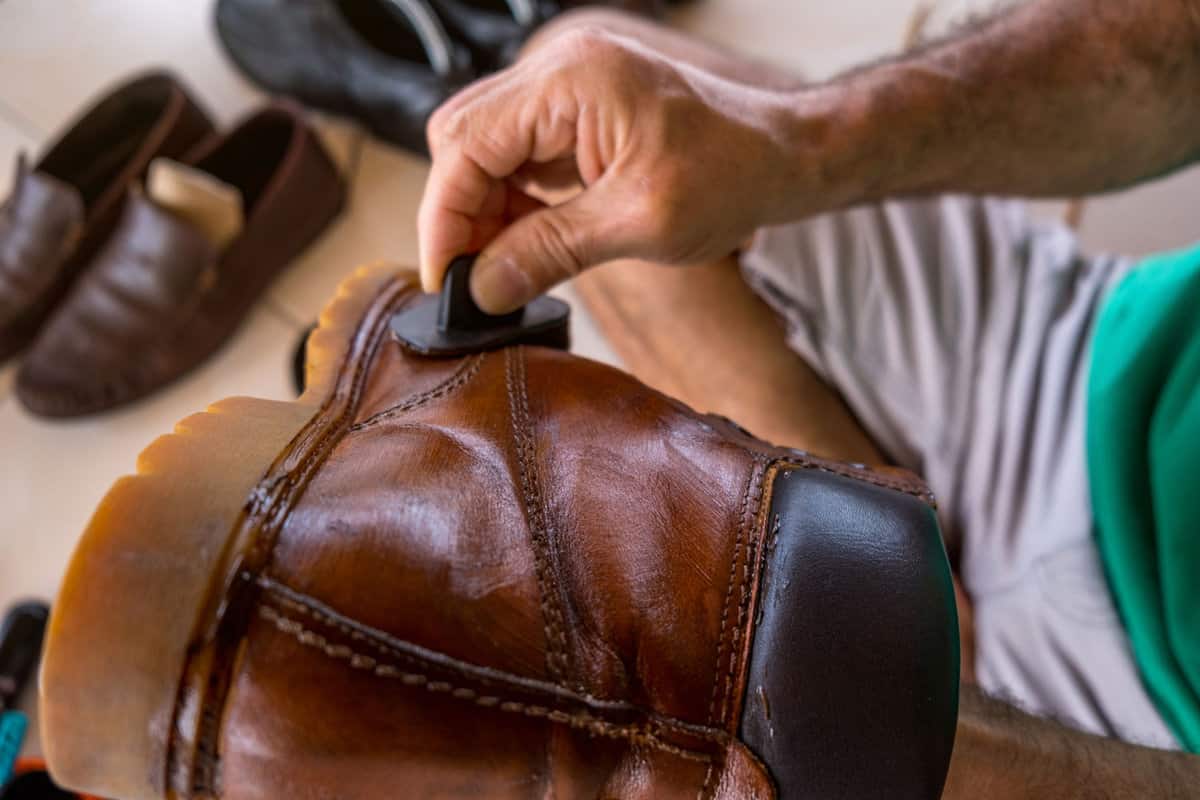
Like we said, leaving your leather repairs to a professional is always a good choice. Besides the fact that a cobbler will be trained in repairing leather gouges, you also won't need to spend a ton of money.
Typically, you can expect a cobbler to charge you between $25 and $100, so this shouldn't break the bank. Again, if your shoes are worth the extra cost, we think it's a great idea to have them fixed professionally.
Can A Cobbler Fix Scratched Leather?
Yes, a cobbler should be able to fix most leather-related damage. However, the more serious the problem, the higher the price will likely be for your footwear, so make sure to budget accordingly.
For deeper scratches or scuffing, you can expect a cobbler to file or refinish the area entirely, which is labor-intensive. That said, it's better to bring your damaged shoes to someone who knows how to fix them rather than risk making the problem worse with an at-home repair kit.
Can Leather Shoes Be Patched?
For those wanting to patch their leather boots, we don't recommend doing this. In general, the only time a leather patching kit will work is for furniture or upholstery.
When it comes to shoes, patching won't usually turn out as good as using filler and dye, so it's not the best option. Instead, we think trying a repair kit will get the job done and have a better result, so that's something to consider.
Coconix Vinyl And Leather Repair Kit
This leather repair kit works on shoes, restores, genuine and synthetic materials, repairs holes, cracks, and gouges, and comes with a 100% satisfaction and manufacturer guarantee.
Check out this repair kit on Amazon.
To Wrap It Up
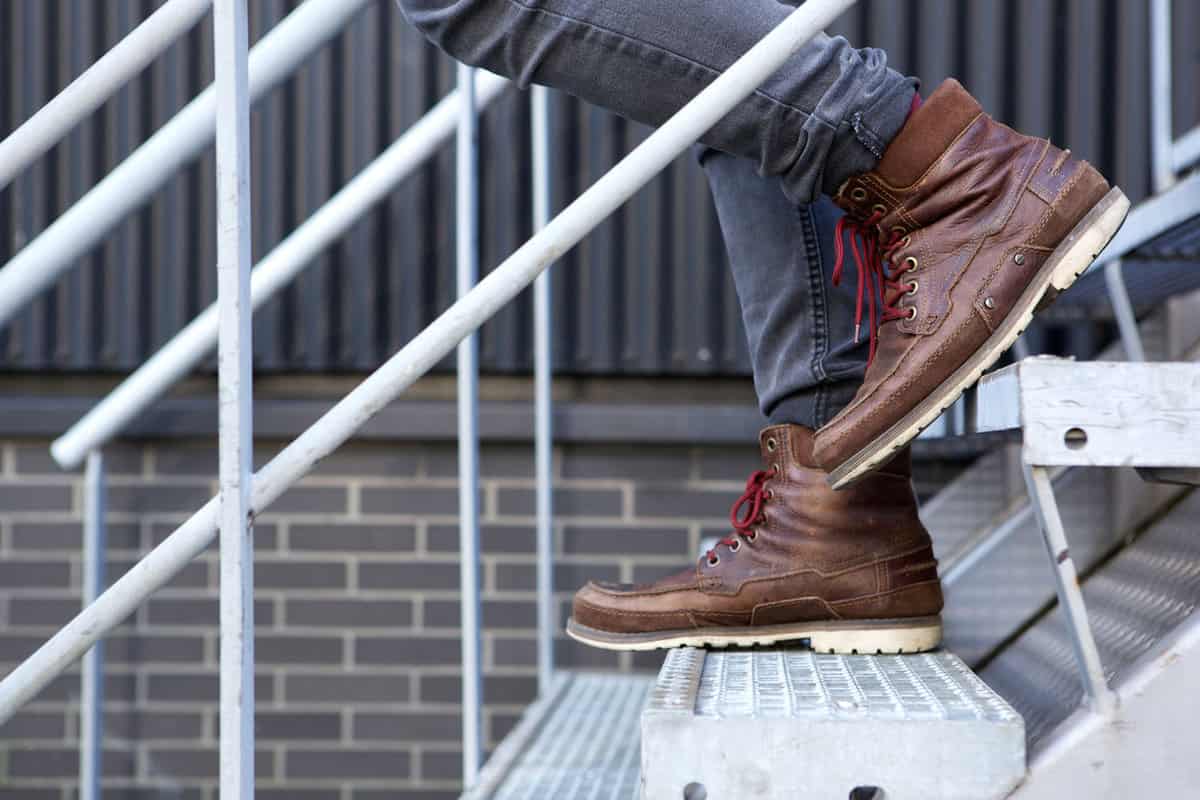
Whether you have a pair of leather boots are want to get some, knowing how to care for them is essential. From what we found, fixing gouges in leather boots is as easy as filler, dye, and sandpaper.
When repairing your shoes at home, we recommend using a kit and following the instructions closely. Furthermore, you can also try taking your leather boots to a professional cobbler, which will cost between $25 and $100.
Regardless, make sure to condition your leather apparel regularly, and don't forget to color match before using any products on your shoes.
Made it to the end? Check out these helpful related leather posts below!
Do Leather Pants Make You Sweat? [Including Faux Leather]





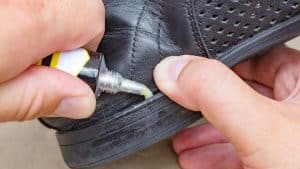
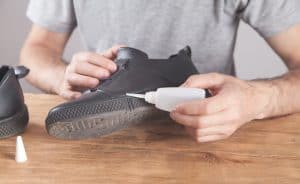
Steps to fix leather boots with deep cracks and scuffs. Step 1: clean the leather boots. Step 2: sand the leather surface. Step 3: apply the leather dye. Step 4: apply and smoothen the leather filler. Step5: (optional) apply more dye and condition the leather.